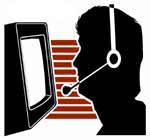As the author states in the Preface, Encyclopedia of Electronic Components Volume 1: Resistors, Capacitors, Inductors, Switches, Encoders, Relays, Transistors is not the kind of book you will read from page one till the end. It's not sequential in that way. But a complete reading would certainly greatly improve your knowledge of these electronic components. is not the kind of book you will read from page one till the end. It's not sequential in that way. But a complete reading would certainly greatly improve your knowledge of these electronic components.
Author Charles Platt is a Contributing Editor and regular columnist for O'Reilly Media's Make: Magazine, where he writes about electronics. If you are looking for more of a tutorial, consider Platt's introductory hands-on book, Make: Electronics . .
In this era of immediate access to information from search engines, why do you need a physical book on electronic components? As Platt suggests, the information available online is often inconsistent in quality. Volume 1 (this book - Vol. 2 and 3 are in the works) is thorough and consistently high-quality.
The book is broken down into sections for Power (such as battery), Connection (fuse, switch, relay), Moderation (resistor, capacitor, inductor), Conversion (transformer, inverter) Regulation (Voltage regulator) Electromagnetism (solenoid), Rotational (motors) and Discrete Semiconductor (diodes, FETs). Each section has a standard group of information presented. Each starts with other common names and related components. Then there is a What it Does section with photos or drawings and then a How it Works section. The Variants sections may include, for example, the different formats for capacitors. Sticking with the capacitors example, there is then a section on Principal Types of capacitors, Dielectrics, Values associated with the component (farads for capacitors) and a lot more details and variants as the component may have.
Each section has a useful What Can Go Wrong section that lists the common problems that may affect a component (wrong polarity, heat, vibration, etc.) and what to do about it. At the end of the 278 page book are a few pages of Schematic Symbols.
It's a complete and detailed reference and the information is presented logically and in an appealing way. Either the Index or Table of Contents (or a quick flip through and browse of the headers at the top of each page) gets you to the desired information fast.
I think it's a terrific resource and am eager to see the next volumes.
Great Lakes Geek Rating: 4.5 out of 5 pocket protectors.
Reviewed by Entreprenerd Dan Hanson, the Great Lakes Geek (11/12)What are you reading? Let us know at dan@greatlakesgeek.com
Top of Page
Back to Great Lakes Geek Book Reviews
| 




